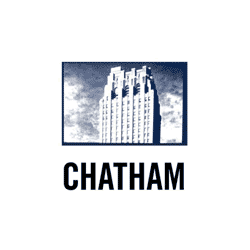|
|
 |

|
 |
Dusted Features
Dusted's Ethan Covey tries to catch a glimpse of Rhys Chatham's An Angel Moves To Fast To See.
|
|
|
 |
More Than Meets the Eye
New York City has always thrived on its ability to merge glitz with grime, creating products that incorporate both high-brow idealism and raw, gritty experimentation. From art to architecture, New York has built itself upon this odd alchemy. The proliferation of trends that spew from the five boroughs each offer forth different takes on the City’s life. From punk to no-wave, art-rock to folk and all other jumbles of creativity, New York births more inspired art than any other modern city. Composer Rhys Chatham’s powerful, uncompromising body of work, his exploration of noise, chaos, composition and calm is in many ways the most direct, passionate musical manifestation of this postmodern way.
Chatham began his career as a classically trained flautist, though he soon fell for the allure of early electronic composition and the avant garde. After catching a Ramones gig at CBGB’s, Chatham became intoxicated by the unbridled passion and grungy minimalism of punk rock, and began composing pieces that utilized – or approximated – the sound of highly amplified electric guitars.
Table of the Elements’ lavishly packaged three-disc set, An Angel Moves too Fast to See, contains all of Chatham’s “major minimal pieces,” ranging from multi-guitar symphonies to droning horn mosaics and the haunting “Two Gongs.” Throughout, Chatham exhibits an exceptional ability to bridge together the intricacies of classical composition with the kick-in-the-gut whallop of rock ‘n’ roll.
The hour-long “Two Gongs” fills the entirety of the first disc with its ethereal, droning psychedelia. While written in 1971, the ’89 recording documented here features Chatham, along with fellow composer Yoshimasa Wada coaxing heavy, overlapping tones out of a pair of Chinese gongs. The instruments buzz and hum, moving in waves from deafening rattles to soft, muted drones. The monstrous noise that Chatham concocts is far more akin to the seismic crashes of monstrously distorted guitar feedback than that of two unprocessed slabs of metal, and it proves the composer’s interest in creating a similar world of sound out of whatever instrument currently proved his muse. On disc, the performance is jaw-droppingly powerful, a monumental chunk of glorious noise. One can only imagine the effect it had live.
The second disc is the most varied of the set. The five pieces collected here not only showcase the guitar-god sound that brought Chatham fame, but two pieces utilizing explosive billows of brass. “Massacre on MacDougal Street” alternates from sounding like the soundtrack to a nightmarish Bond flick to the cacophonous wails of a drunken marching band – all underpinned by a steady rock pulse. “Watterloo, No. 2” features three trumpets and two trombones tossing off a continuous flurry of notes against the militaristic crackle of a solo snare.
Yet, it is Chatham’s guitar work that always going to be the top draw for interested listeners. “Die Donnergötter,” “Drastic Classicism” and “Guitar Trio,” all included on disc two, are the cornerstones of the composer’s guitar based material. “Die Donnergötter,” a 21-minute beauty, touches on new-wave, Krautrock and post-rock far before these sounds were shaking American shores. The solid motorik drumming and endlessly repeating guitar phrases make the tune an obvious – if not intentional – relation to Neu!’s German experimentalism. “Drastic Classicalism” is far more “punk.” A quick drum roll opens the tune before clouds of sharp guitar spit from the speakers. This is Chatham at his noisiest, composing strictly for sound. Each breakdown and buildup lurches with a supercharged, nearly violent crush.
“Guitar Trio” is in many ways Chatham’s signature cut. Opening with his trademark pulse, first one, then two and three guitars rumble away on a single-string melody. The notes clamor over each other, merging, fighting, joining and building into a perpetual hum. Even today, there is no question as to the absolute power of this piece.
The final disc contains the album’s title track, a dizzying orchestral score for a chorus of 100 guitars. Yet even in its grandeur, the track’s five pieces shift effortlessly from solemn, subtle pricks of noise to ear-splitting blocks of sound. The formula is similar to Chatham’s other pieces; almost always the feedback is pinned to the ground with a steady drum kick, almost always the guitars rise and fall like tides. The sheer hugeness of the movement is remarkable – remember, Chatham was performing these pieces years before his former student Glenn Branca made them famous.
One could write a book about the influence that Chatham had on both modern composition and modern rock. Aside from Branca, Lee Renaldo and Thurston Moore of Sonic Youth, Ben Neill, Wharton Tiers and many other future avant stars got their initial doses of mayhem working with Chatham’s groups. Certainly, Chatham has hordes of work that are not represented in this set, but for anyone interested in the history and future of the electric guitar, An Angel Moves too Fast to See should not be missed.
By Ethan Covey
|







